Yup let me write something up really quick@NateD1226 perhaps you can help us out with this!?
-
Welcome to the WDWMAGIC.COM Forums!
Please take a look around, and feel free to sign up and join the community.
You are using an out of date browser. It may not display this or other websites correctly.
You should upgrade or use an alternative browser.
You should upgrade or use an alternative browser.
SAVI - Stanza V: Team S.E.A. - Alton Towers
- Thread starter NateD1226
- Start date
Evilgidgit
Well-Known Member
FINALLY! Here's part one! Feel free to edit/shorten it if necessary.
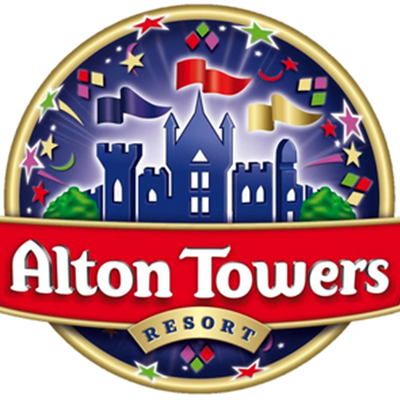
Introduction
Much to relief of Team S.E.A., Brexit finally happened, and Great Britain hadn’t sunk into the sea yet, so we had time to visit the country’s most popular theme park: Alton Towers.
Owned by Merlin Entertainments, which has dominion over most other British theme parks and attractions, Alton Towers is set in the heart of the Staffordshire country, close to the village of Alton. Once a prosperous estate, the property and surrounding land was sold, transforming it into a public theme park, and later a resort. The park is vast, made up of a lot of untouched woodland across 910 acres, attracting 2.1 million people a year. A recent injection of $250 million into the park’s infrastructure, leading to mass expansions to the park, with the inclusion of two new lands and refurbishments to all the other existing areas.
The American members of our party practically bouncing up and down in their coach seats. However, we all remained mostly unaware of the finer details of the park’s facelift, but were intrigued by the creative challenges Alton Towers’ own Imagineers faced. They were forbidden from touching the ancient Alton Towers and their beautiful gardens. There was also the unusual rule that no attractions or buildings could go above the tree line, pushing Merlin Entertainments to think outside the box in their imagineering.
While in America, theme park news was a big deal, the UK’s are more downplayed. The planned London Resort had yet to get off the ground, but luckily the news of Alton Towers’ expansion and refurbishment were enough to excite Team S.E.A. Behind closed doors, Merlin had made licensing deals with Frederick Warne & Co., The C.S. Lewis Company, Roald Dahl Story Company Ltd, and more surprisingly of all, the video game company Sega, announcing their intention to bring their properties to life in new lands and attractions. The investment in building a video game-themed land to rival Universal’s Super Nintendo World took the theme park industry by storm. For now, Sonic the Hedgehog is the only Sega property featured in the park, but rumours abound that more franchises would appear in future phases.
Upon being dropped off in the resort’s car park, we were met by an unusual sight. Alton Powers boasts a number of exhilarating rollercoasters including Oblivion, Nemesis, and The Smiler, but we didn’t expect to see the remnants of the long gone Corkscrew coaster on display. Its gorgeous purple and golden colours maid homage to the rollercoaster’s history, and that of the park. The park’s monorail passed by, circling the entrance plaza, delivering guests from the nearby hotels. No one was particularly keen on staying in the CBeebies Hotel, or trying out the controversial Star Pods.
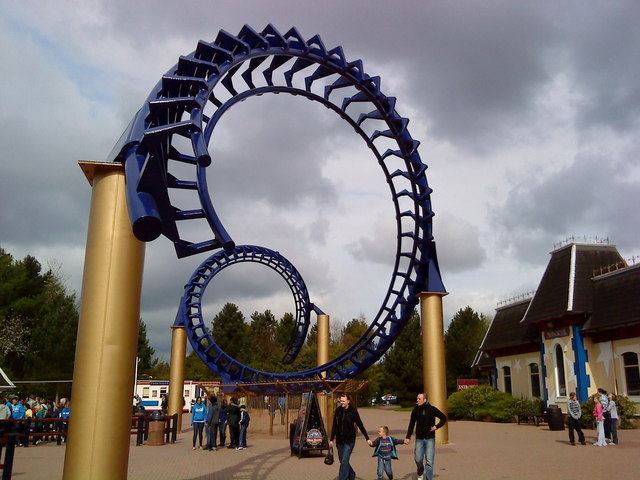
Every park needs a good entry land, and our glimpse of Alton Towers’ historic coaster took us into another historical setting.
TOWERS STREET served as the Main Street of Alton Towers, in a semi-Victorian English environment. The land itself was not very big, paving the way for a patchwork of green lawns, the blue Boating Lake, and beyond that were The Towers themselves, the remnants of Alton Towers and serving as the central point of the park. Almost like a real world counterpart to Disneyland’s Sleeping Beauty Castle.
Once with multicoloured buildings straight out of Balamory, Towers Street now resembled a Victoria-era street straight out of a painting. It is a minimalistic approach, but still has its charms with its intricate details in the windows. The view of the lake, lawns, and the Towers serve as the true attractions of the land, but there are a number of shops and restaurants to visit, small in size, but had plenty of merchandise and food to buy, with new exteriors to match the Victorian aesthetic.
The right-hand side of the street had been reduced to exterior scenery for many years, but had been transformed into a large new multi-sectioned park called the Alton Emporium, split between three wings, one for books, one for branded clothes, and a third for music and media. The new shop attracted quite the crowd, with plenty of collectibles, and a Harrods-esque design provided a lot to explore and enjoy.
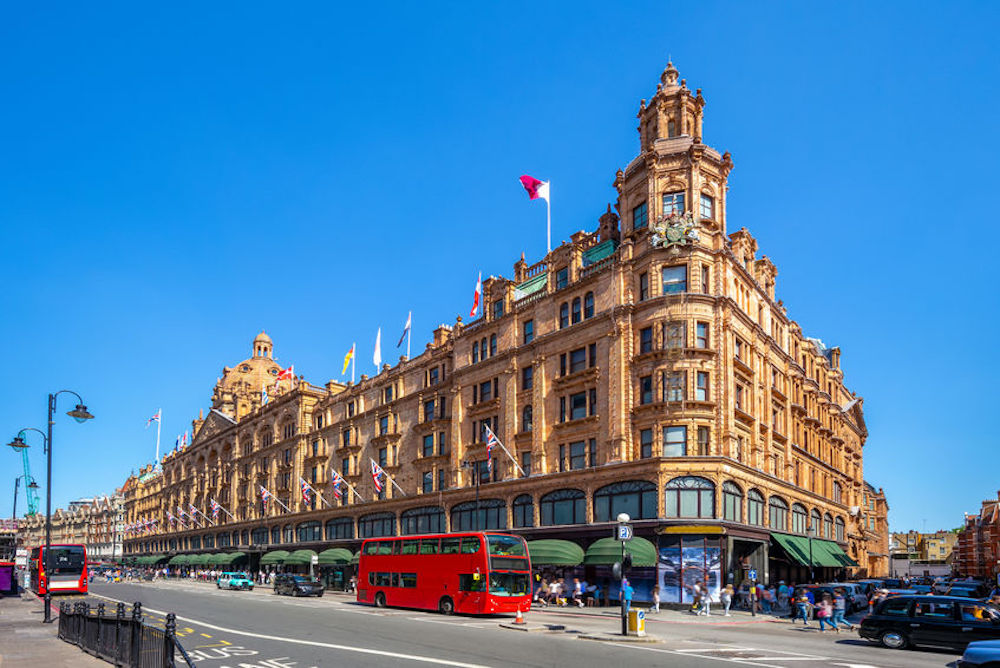
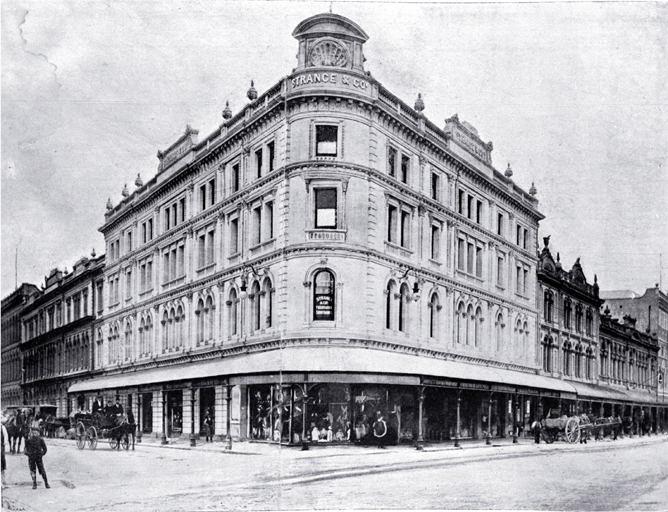
Team S.E.A. scattered to the four winds, visiting every land in the park, exploring the new attractions, but taking time to wander through the lovely gardens too. Not something you often do in a theme park, but it is a British thing.
Once upon a time, two lands used to live in the eastern side of the park, named Adventure Land, home to a lone rollercoaster, and the sweet but somewhat babyish CBeebies Land. Both lands closed to make way for one larger new arrival, though a majority of the CBeebies Land attractions were moved over to the CBeebies Hotel, creating a new play park of sorts.
FABLED FOREST celebrates English children’s literature, combining the works of C.S. Lewis, Beatrix Potter, and Roald Dahl in a brand new land, inheriting the educational roots set by CBeebies Land and its predecessors. The natural trees and woodland made the area feel almost like it had always been there, homely and inviting. Some of British’s greatest literature has found its home here, with several new attractions, split into three sections.
[INSERT MAP HERE. MAY OR MAY NOT INCLUDE ONE DEPENDING ON TIME.]
Our first destination was a large Edwardian manorhouse, not to out of place with the rest of the former grand estate. We spotted a few of these buildings visible around the park, and at first, nearly dismissed it out of hand. That’s when we noticed a lot of people going inside, drawn to whatever was in the house. We soon discovered, to our surprise, that people were stepping through a huge floor-to-ceiling wardrobe and disappearing inside.
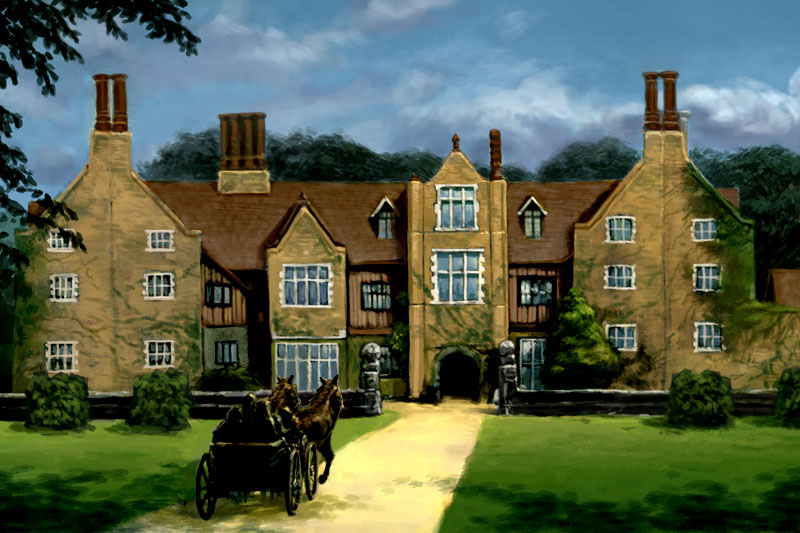
Curious and already kinda knowing what to expect, but still drawn with childlike wonder, we too stepped through this magic wardrobe and found ourselves in the snowy forest of Narnia, from C.S. Lewis’ book series. @Brer Panther, who had no prior emotional experience to the books or movies, was particularly enchanted by the perfecting transition into this wintery realm. The snowy forest, with the iconic lamppost in the centre, was gorgeous to behold.

In truth, Narnia is an intelligent piece of imagineering, placed with a hidden, climate controlled show building, invisible within the tree line. Although small in size, it is home to a river boat ride, a combined restaurant-shop duplex, and a separate store as well, all based within the realm of Narnia. The building takes up most of the room in the former CBeebies Land.
We quickly made our way onto the sub-land’s lone but impressively enchanting attraction: Chronicles of Narnia: The Lion, the Witch, and the Wardrobe. An eight-to-ten minute riverboat ride, it is based on the first of C.S. Lewis’ novels, The Lion, the Witch, and the Wardrobe. We passed through scenes from the novel, guided through light snowfall, and the climate conditioning found in the rest of this magical place.
Upon arriving at the entrance to Chronicles of Narnia: The Lion, The Witch and the Wardrobe, I immediately got flashbacks to that Journey to Narnia thing they had at Disney's Hollywood Studios. But this was much better. It wasn't a walk-through, it was a boat ride that took you through Narnia. There were really impressive animatronics of all the characters from the book... Aslan is my personal favourite, but Mr. Tumnus and the White Witch looked great too! And the entire attraction had the air conditioning on really high, which combined with the snow effect (how DID they do that?) really immersed me in the story. For a few seconds, I forgot that this was just a theme park ride... I thought that I'd actually arrived in Narnia!
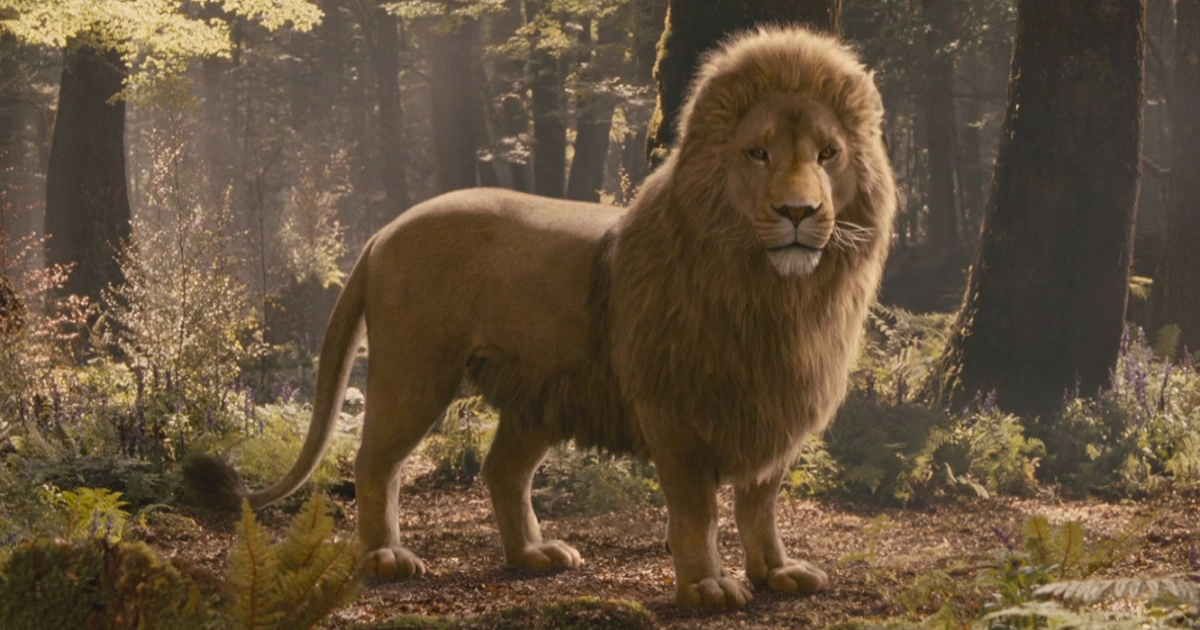
The queue took us through the ruins of a large stone castle, subjected to time and age, covered in ivy. One thing of note was the remnants of a throne room, judging by the four high thrones, perfectly preserved. Perhaps left to wait for their owners. We came to a dock where wooden boats wait, with room for around sixteen guests per boat. The cast members played the role of acolytes of the Pensieve children, their lost kings and queens, sending us into perhaps the past or a memory to follow Lucy, Edmund, Susan, and Peter’s journey.
The journey began pleasant and atmospheric, similar to the opening scenes of Pirates of the Caribbean, taking us through more ruins and a snowy glen. We then passed by a series of scenes familiar to us from the books and movie adaptations:
Lucy enters Narnia for the first time and meets the faun Mr. Tumnus. In his home, made in the heart of a huge tree, Tumnus warns Lucy about Jadis the White Witch and how she seeks to kill the children of Adam and Eve (i.e. humans). Things grew dark and eerie as we entered a dead wood, full of petrified animals and characters, before meeting Jadis, her sleigh pulled by polar bears, who entices Edmund with Turkish delights. The four siblings appear in Narnia together, meeting Mr. and Mrs. Beaver, fleeing from Jadis' wolves. Father Christmas then turned up, arming the Pensieves, and gave us a warning to evade Jadis and to seek out the lion Aslan. During this scene, the winter begins to disappear, hinting at Aslan’s return to Narnia.
Speaking of which, things turnrf sunny as we and the children encountered the mighty lion for the first time, amongst other creatures like talking animals and centaurs. Maugrim, the witch’s wolf minion, showed up in the next scene and warned us that Edmund is a traitor and must be sacrificed at the Standing Stones. Aslan refuseed, instead going in his stead. In a rather harrowing scene which would likely upset a few kiddies, a hairless Aslan is sacrificed by Jadis on the stones. Around the corner, we heard a lion roar, revealing the Standing Stones were cracked in half and Aslan had been reborn a new. We passed through a gorge where Aslan and Jadis’ respective armies fought each other above and around us. We approached a looming mountain where Jadis’ icy fortress awaited us.
In her fort, full of petrified victims, Aslan, accompanied by Lucy and Susan, magically freed all of them, via some jawdropping special effects akin to seeing stone come to life. Luckily for us, Jadis was defeated (or at least implied) by Aslan. In a final scene, the four Pensieve children were declared the new kings and queens of Narnia, sitting on the thrones we saw at the beginning. Aslan bid us farewell as we returned to the loading bay.
Outside the ride, Mr. Tumnus’ Lamplight Luncheon is based underground within Tumnus’ homely home. The menu was small, offering sandwiches, pastries, and traditional English meals. Its cousin is the Narnian Wood Shop, a shop run by the Beavers, who have created many works of art from wood and timber. Plenty of Narnia merchandise can be found here.
While this Narnia area was small and only contains one attraction, its immersive theming was like a work of art, beautiful and easy to get lost in, on a level which could give Disney Imagineering a run for their money. And just like the Pensieve children finding their way back home, we did as well, through an exit in the form of another wardrobe on the side of the manorhouse.
Onward we went into the realm of Roald Dahl, author of Matilda, Charlie and the Chocolate Factory, and The Witches. This subland is relatively small, only with two small attractions, but there is room for further additions. The setting resembles a small urban neighbourhood, though everything from the fences to the steeples of a nearby schoolhouse are a slightly crooked in a whimsical way.
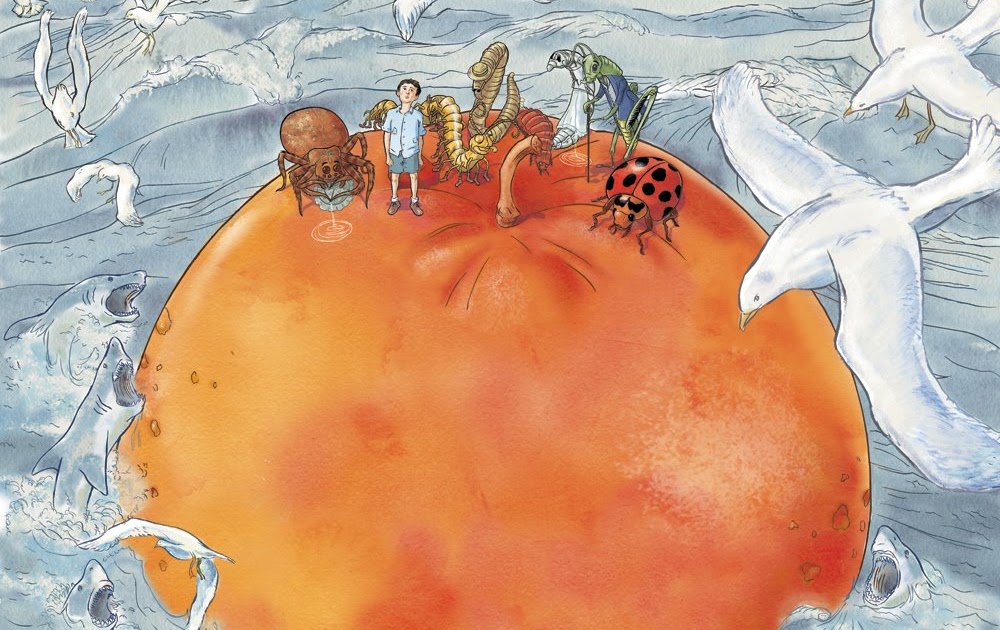
It was a little hard to miss the Giant Peach in the middle of the woods, but was quite the sight. While no way near as huge as Spaceship Earth, the peach, obviously from James and the Giant Peach, was big enough to house an exploratory walkthrough, and hide the entrance way to the delightfully weird Strange and Scrumptious Restaurant, based “within” the peach’s core, where James’ insect friends set up a restaurant. The menu raised some eyebrows, with such options like “Earwigs Slime Supreme” and “Mosquitoes-on-Toast”. But, thankfully (and luckily), it was no Bush Tucker Trial, and the food was a mix of European cuisine with clever twists on them.
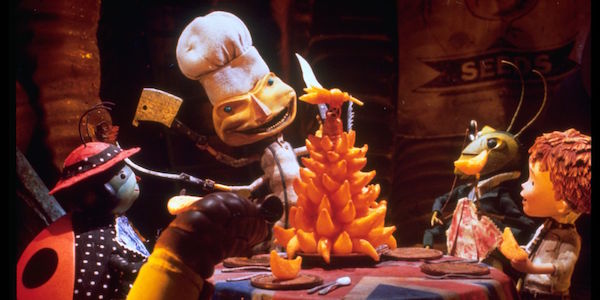
The other attraction is Matilda’s Mischievous Adventure, based on the book of the same name, though there was some inspiration from the beloved 1990s film. A suspended dark ride set in the schoolhouse, we boarded perhaps the most unexpected vehicles of all – giant paper airplanes, that appeared to soar through the scenes with no sign of suspension. The mechanics may have been beneath, or this was so sort of unique use of the KUKA technology. Each scene followed the events of the book, Matilda using her psychic powers to cause some mischief for her parents, and the tyrannical Ms. Trunchbull. Each scene was filled with eye-popping special effects, such as a room with a floating jug of water spilling down on us but with no ill effect, and school desks flying across the room on their own accord.
Next door to the attraction lies Miss Honey’s Sweet Café, set in a lovely, thatched roof English cottage. This small location was just about everyone’s cup of tea so to speak, @D Hindley practically screaming when tea and scones were served. The restaurant also sold products related to Dahl’s characters, including original Alton Towers-branded honey, marmalade and jam products.
On the edge of the path, perhaps serving as a foundation for future expansion, sits the Scrumdidlyumptious Shop, a turn-of-the-century sweet shop, selling Wonka Bars, unstoppable gobstoppers, and other delicious chocolate and candy.
The final stop in the Fabled Forest is based on the timeless works of Beatrix Potter. Still scarred by the monstrous Sony movie that butchered the image of Peter Rabbit and friends, some of us were dubious to how well Miss Potter’s characters would adapt to the theme park business. To our joy and content, there were no farting animals to be found here.

Peter Rabbit’s Neighbourhood is home to the collective animal friends from Beatrix Potter’s wonderful books. Huge burrows resembling cottages, a frog’s equivalent of a lake, and other nooks and crannies decorated this countryside community. Serene hillocks and enormous trees that had stood in the park for years helped to make this place feel real, and that we were a part of it. Everything looked like it had stepped out of Beatrix Potter’s books. Like a British version of Critter Country! If anyone wanted to get on the next train to the Lake District, they’d have to do it after our fight against Team L.A.N.D. was over!
The anchor of this area is Peter Rabbit’s Carrot Caper, a fast-paced fun trackless dark ride, adapting The Tale of Peter Rabbit into an attraction that had us racing around a giant vegetable patch in carrots. We travelled into a giant rabbit burrow, following the queue line through the home of Peter Rabbit, his mother, and sisters Mopsy, Flopsy, and Cottontail. Hopping aboard into giant carrots – heh, heh, hopping – we set off to follow Peter on his daring but foolish adventure into Mr. McGregor’s garden.
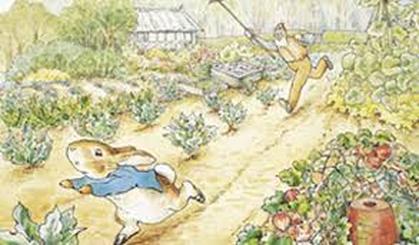
The use of LED screens, map paintings, and forced perspective made the garden look more larger than it is, as do all the huge props, tools, and vegetables. From our point of view, Peter was around our size, and Mr. McGregor, when he appears, was even bigger! Under the garden fence we went, seeing Peter chowing down on carrots and lettuce, watched by a curious robin. But, soon enough, he (and we) ran foul of Mr. McGregor, causing us to flee through the garden, under shovels and through watering cans. Peter hid in the greenhouse, under flower pots, where Mr. McGregor searches. He nearly lifted our pot up, nearly taking our moving carrot right off the ground.
Losing his clothes to a scarecrow, Peter evaded Mr. McGregor and his sinister, silent white cat, gaining help from excited sparrows and a mouse, guiding Peter and us back out of the garden to safety. Whilst we get away safely, poor Peter is left to face the wrath and chamomile tea of his mother. Better luck next time, Peter.
After Peter Rabbit's Carrot Caper, the Beatrix Potter theming continued with a nearby attraction called Jeremy Fisher's Lilypad Splash. It was a lot of fun, very similar to Aquatopia at Tokyo DisneySea. You sit in a lilypad and manoeuvre around a large pond. In the centre of the pond was an animatronic of Jeremy Fisher himself, fishing. There were also some animatronic fish scattered about the pond, poking their heads out of the water every so often. The giant reeds, cattails and water lilies (some of which doubled as fountains) surrounding the attraction really helped to sell the idea that we were the size of a frog. I was pretty worried that I might get wet, but I managed to get off the ride dry as a bone.
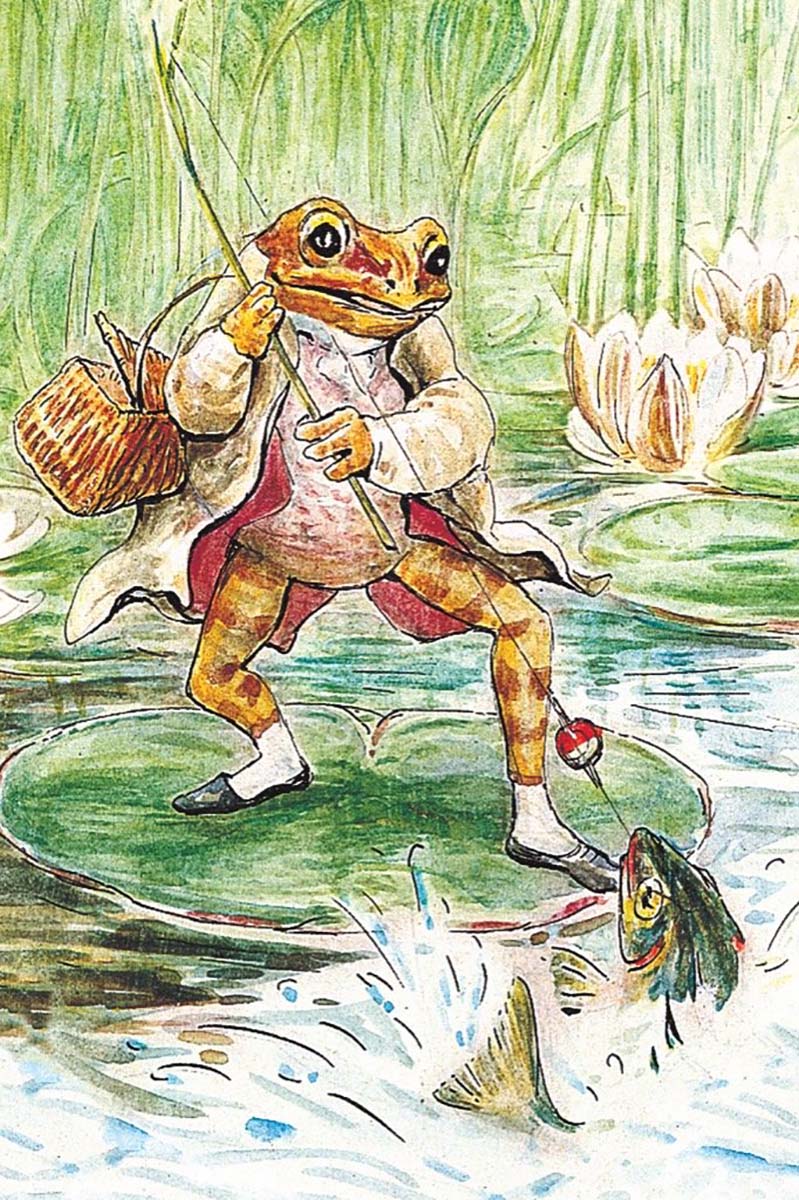
One remnant of CBeebies Land remained, moved across the land and given a new coat of paint and purpose. Squirrel Nutkin Treetop Trail is a rehashed Get-Set-Go Treetop Adventure, still sporting the gentle railway treetop journey, though with the vehicles now redesigned to resemble acorns. Static models of Squirrel Nutkin and other characters were placed in the tree branches. While not as elaborate as the other attractions, the reimagining of the old ride was a good choice.
Mrs. Tiggywinkle’s Parlour served as the lone shop/restaurant in the subland, remind some of our Tokyo Disneyland veterans of Grandma Sara’s Kitchen. The motherly hedgehog welcomes guests into her own bakery and shop, selling mostly clothes, but also a variety of tasty snacks and jammed food.

To be continued!!

Introduction
Much to relief of Team S.E.A., Brexit finally happened, and Great Britain hadn’t sunk into the sea yet, so we had time to visit the country’s most popular theme park: Alton Towers.
Owned by Merlin Entertainments, which has dominion over most other British theme parks and attractions, Alton Towers is set in the heart of the Staffordshire country, close to the village of Alton. Once a prosperous estate, the property and surrounding land was sold, transforming it into a public theme park, and later a resort. The park is vast, made up of a lot of untouched woodland across 910 acres, attracting 2.1 million people a year. A recent injection of $250 million into the park’s infrastructure, leading to mass expansions to the park, with the inclusion of two new lands and refurbishments to all the other existing areas.
The American members of our party practically bouncing up and down in their coach seats. However, we all remained mostly unaware of the finer details of the park’s facelift, but were intrigued by the creative challenges Alton Towers’ own Imagineers faced. They were forbidden from touching the ancient Alton Towers and their beautiful gardens. There was also the unusual rule that no attractions or buildings could go above the tree line, pushing Merlin Entertainments to think outside the box in their imagineering.
While in America, theme park news was a big deal, the UK’s are more downplayed. The planned London Resort had yet to get off the ground, but luckily the news of Alton Towers’ expansion and refurbishment were enough to excite Team S.E.A. Behind closed doors, Merlin had made licensing deals with Frederick Warne & Co., The C.S. Lewis Company, Roald Dahl Story Company Ltd, and more surprisingly of all, the video game company Sega, announcing their intention to bring their properties to life in new lands and attractions. The investment in building a video game-themed land to rival Universal’s Super Nintendo World took the theme park industry by storm. For now, Sonic the Hedgehog is the only Sega property featured in the park, but rumours abound that more franchises would appear in future phases.
Upon being dropped off in the resort’s car park, we were met by an unusual sight. Alton Powers boasts a number of exhilarating rollercoasters including Oblivion, Nemesis, and The Smiler, but we didn’t expect to see the remnants of the long gone Corkscrew coaster on display. Its gorgeous purple and golden colours maid homage to the rollercoaster’s history, and that of the park. The park’s monorail passed by, circling the entrance plaza, delivering guests from the nearby hotels. No one was particularly keen on staying in the CBeebies Hotel, or trying out the controversial Star Pods.

Every park needs a good entry land, and our glimpse of Alton Towers’ historic coaster took us into another historical setting.
TOWERS STREET served as the Main Street of Alton Towers, in a semi-Victorian English environment. The land itself was not very big, paving the way for a patchwork of green lawns, the blue Boating Lake, and beyond that were The Towers themselves, the remnants of Alton Towers and serving as the central point of the park. Almost like a real world counterpart to Disneyland’s Sleeping Beauty Castle.
Once with multicoloured buildings straight out of Balamory, Towers Street now resembled a Victoria-era street straight out of a painting. It is a minimalistic approach, but still has its charms with its intricate details in the windows. The view of the lake, lawns, and the Towers serve as the true attractions of the land, but there are a number of shops and restaurants to visit, small in size, but had plenty of merchandise and food to buy, with new exteriors to match the Victorian aesthetic.
The right-hand side of the street had been reduced to exterior scenery for many years, but had been transformed into a large new multi-sectioned park called the Alton Emporium, split between three wings, one for books, one for branded clothes, and a third for music and media. The new shop attracted quite the crowd, with plenty of collectibles, and a Harrods-esque design provided a lot to explore and enjoy.


Team S.E.A. scattered to the four winds, visiting every land in the park, exploring the new attractions, but taking time to wander through the lovely gardens too. Not something you often do in a theme park, but it is a British thing.
Once upon a time, two lands used to live in the eastern side of the park, named Adventure Land, home to a lone rollercoaster, and the sweet but somewhat babyish CBeebies Land. Both lands closed to make way for one larger new arrival, though a majority of the CBeebies Land attractions were moved over to the CBeebies Hotel, creating a new play park of sorts.
FABLED FOREST celebrates English children’s literature, combining the works of C.S. Lewis, Beatrix Potter, and Roald Dahl in a brand new land, inheriting the educational roots set by CBeebies Land and its predecessors. The natural trees and woodland made the area feel almost like it had always been there, homely and inviting. Some of British’s greatest literature has found its home here, with several new attractions, split into three sections.
[INSERT MAP HERE. MAY OR MAY NOT INCLUDE ONE DEPENDING ON TIME.]
Our first destination was a large Edwardian manorhouse, not to out of place with the rest of the former grand estate. We spotted a few of these buildings visible around the park, and at first, nearly dismissed it out of hand. That’s when we noticed a lot of people going inside, drawn to whatever was in the house. We soon discovered, to our surprise, that people were stepping through a huge floor-to-ceiling wardrobe and disappearing inside.

Curious and already kinda knowing what to expect, but still drawn with childlike wonder, we too stepped through this magic wardrobe and found ourselves in the snowy forest of Narnia, from C.S. Lewis’ book series. @Brer Panther, who had no prior emotional experience to the books or movies, was particularly enchanted by the perfecting transition into this wintery realm. The snowy forest, with the iconic lamppost in the centre, was gorgeous to behold.

In truth, Narnia is an intelligent piece of imagineering, placed with a hidden, climate controlled show building, invisible within the tree line. Although small in size, it is home to a river boat ride, a combined restaurant-shop duplex, and a separate store as well, all based within the realm of Narnia. The building takes up most of the room in the former CBeebies Land.
We quickly made our way onto the sub-land’s lone but impressively enchanting attraction: Chronicles of Narnia: The Lion, the Witch, and the Wardrobe. An eight-to-ten minute riverboat ride, it is based on the first of C.S. Lewis’ novels, The Lion, the Witch, and the Wardrobe. We passed through scenes from the novel, guided through light snowfall, and the climate conditioning found in the rest of this magical place.
Upon arriving at the entrance to Chronicles of Narnia: The Lion, The Witch and the Wardrobe, I immediately got flashbacks to that Journey to Narnia thing they had at Disney's Hollywood Studios. But this was much better. It wasn't a walk-through, it was a boat ride that took you through Narnia. There were really impressive animatronics of all the characters from the book... Aslan is my personal favourite, but Mr. Tumnus and the White Witch looked great too! And the entire attraction had the air conditioning on really high, which combined with the snow effect (how DID they do that?) really immersed me in the story. For a few seconds, I forgot that this was just a theme park ride... I thought that I'd actually arrived in Narnia!

The queue took us through the ruins of a large stone castle, subjected to time and age, covered in ivy. One thing of note was the remnants of a throne room, judging by the four high thrones, perfectly preserved. Perhaps left to wait for their owners. We came to a dock where wooden boats wait, with room for around sixteen guests per boat. The cast members played the role of acolytes of the Pensieve children, their lost kings and queens, sending us into perhaps the past or a memory to follow Lucy, Edmund, Susan, and Peter’s journey.
The journey began pleasant and atmospheric, similar to the opening scenes of Pirates of the Caribbean, taking us through more ruins and a snowy glen. We then passed by a series of scenes familiar to us from the books and movie adaptations:
Lucy enters Narnia for the first time and meets the faun Mr. Tumnus. In his home, made in the heart of a huge tree, Tumnus warns Lucy about Jadis the White Witch and how she seeks to kill the children of Adam and Eve (i.e. humans). Things grew dark and eerie as we entered a dead wood, full of petrified animals and characters, before meeting Jadis, her sleigh pulled by polar bears, who entices Edmund with Turkish delights. The four siblings appear in Narnia together, meeting Mr. and Mrs. Beaver, fleeing from Jadis' wolves. Father Christmas then turned up, arming the Pensieves, and gave us a warning to evade Jadis and to seek out the lion Aslan. During this scene, the winter begins to disappear, hinting at Aslan’s return to Narnia.
Speaking of which, things turnrf sunny as we and the children encountered the mighty lion for the first time, amongst other creatures like talking animals and centaurs. Maugrim, the witch’s wolf minion, showed up in the next scene and warned us that Edmund is a traitor and must be sacrificed at the Standing Stones. Aslan refuseed, instead going in his stead. In a rather harrowing scene which would likely upset a few kiddies, a hairless Aslan is sacrificed by Jadis on the stones. Around the corner, we heard a lion roar, revealing the Standing Stones were cracked in half and Aslan had been reborn a new. We passed through a gorge where Aslan and Jadis’ respective armies fought each other above and around us. We approached a looming mountain where Jadis’ icy fortress awaited us.
In her fort, full of petrified victims, Aslan, accompanied by Lucy and Susan, magically freed all of them, via some jawdropping special effects akin to seeing stone come to life. Luckily for us, Jadis was defeated (or at least implied) by Aslan. In a final scene, the four Pensieve children were declared the new kings and queens of Narnia, sitting on the thrones we saw at the beginning. Aslan bid us farewell as we returned to the loading bay.
Outside the ride, Mr. Tumnus’ Lamplight Luncheon is based underground within Tumnus’ homely home. The menu was small, offering sandwiches, pastries, and traditional English meals. Its cousin is the Narnian Wood Shop, a shop run by the Beavers, who have created many works of art from wood and timber. Plenty of Narnia merchandise can be found here.
While this Narnia area was small and only contains one attraction, its immersive theming was like a work of art, beautiful and easy to get lost in, on a level which could give Disney Imagineering a run for their money. And just like the Pensieve children finding their way back home, we did as well, through an exit in the form of another wardrobe on the side of the manorhouse.
Onward we went into the realm of Roald Dahl, author of Matilda, Charlie and the Chocolate Factory, and The Witches. This subland is relatively small, only with two small attractions, but there is room for further additions. The setting resembles a small urban neighbourhood, though everything from the fences to the steeples of a nearby schoolhouse are a slightly crooked in a whimsical way.

It was a little hard to miss the Giant Peach in the middle of the woods, but was quite the sight. While no way near as huge as Spaceship Earth, the peach, obviously from James and the Giant Peach, was big enough to house an exploratory walkthrough, and hide the entrance way to the delightfully weird Strange and Scrumptious Restaurant, based “within” the peach’s core, where James’ insect friends set up a restaurant. The menu raised some eyebrows, with such options like “Earwigs Slime Supreme” and “Mosquitoes-on-Toast”. But, thankfully (and luckily), it was no Bush Tucker Trial, and the food was a mix of European cuisine with clever twists on them.

The other attraction is Matilda’s Mischievous Adventure, based on the book of the same name, though there was some inspiration from the beloved 1990s film. A suspended dark ride set in the schoolhouse, we boarded perhaps the most unexpected vehicles of all – giant paper airplanes, that appeared to soar through the scenes with no sign of suspension. The mechanics may have been beneath, or this was so sort of unique use of the KUKA technology. Each scene followed the events of the book, Matilda using her psychic powers to cause some mischief for her parents, and the tyrannical Ms. Trunchbull. Each scene was filled with eye-popping special effects, such as a room with a floating jug of water spilling down on us but with no ill effect, and school desks flying across the room on their own accord.
Next door to the attraction lies Miss Honey’s Sweet Café, set in a lovely, thatched roof English cottage. This small location was just about everyone’s cup of tea so to speak, @D Hindley practically screaming when tea and scones were served. The restaurant also sold products related to Dahl’s characters, including original Alton Towers-branded honey, marmalade and jam products.
On the edge of the path, perhaps serving as a foundation for future expansion, sits the Scrumdidlyumptious Shop, a turn-of-the-century sweet shop, selling Wonka Bars, unstoppable gobstoppers, and other delicious chocolate and candy.
The final stop in the Fabled Forest is based on the timeless works of Beatrix Potter. Still scarred by the monstrous Sony movie that butchered the image of Peter Rabbit and friends, some of us were dubious to how well Miss Potter’s characters would adapt to the theme park business. To our joy and content, there were no farting animals to be found here.

Peter Rabbit’s Neighbourhood is home to the collective animal friends from Beatrix Potter’s wonderful books. Huge burrows resembling cottages, a frog’s equivalent of a lake, and other nooks and crannies decorated this countryside community. Serene hillocks and enormous trees that had stood in the park for years helped to make this place feel real, and that we were a part of it. Everything looked like it had stepped out of Beatrix Potter’s books. Like a British version of Critter Country! If anyone wanted to get on the next train to the Lake District, they’d have to do it after our fight against Team L.A.N.D. was over!
The anchor of this area is Peter Rabbit’s Carrot Caper, a fast-paced fun trackless dark ride, adapting The Tale of Peter Rabbit into an attraction that had us racing around a giant vegetable patch in carrots. We travelled into a giant rabbit burrow, following the queue line through the home of Peter Rabbit, his mother, and sisters Mopsy, Flopsy, and Cottontail. Hopping aboard into giant carrots – heh, heh, hopping – we set off to follow Peter on his daring but foolish adventure into Mr. McGregor’s garden.

The use of LED screens, map paintings, and forced perspective made the garden look more larger than it is, as do all the huge props, tools, and vegetables. From our point of view, Peter was around our size, and Mr. McGregor, when he appears, was even bigger! Under the garden fence we went, seeing Peter chowing down on carrots and lettuce, watched by a curious robin. But, soon enough, he (and we) ran foul of Mr. McGregor, causing us to flee through the garden, under shovels and through watering cans. Peter hid in the greenhouse, under flower pots, where Mr. McGregor searches. He nearly lifted our pot up, nearly taking our moving carrot right off the ground.
Losing his clothes to a scarecrow, Peter evaded Mr. McGregor and his sinister, silent white cat, gaining help from excited sparrows and a mouse, guiding Peter and us back out of the garden to safety. Whilst we get away safely, poor Peter is left to face the wrath and chamomile tea of his mother. Better luck next time, Peter.
After Peter Rabbit's Carrot Caper, the Beatrix Potter theming continued with a nearby attraction called Jeremy Fisher's Lilypad Splash. It was a lot of fun, very similar to Aquatopia at Tokyo DisneySea. You sit in a lilypad and manoeuvre around a large pond. In the centre of the pond was an animatronic of Jeremy Fisher himself, fishing. There were also some animatronic fish scattered about the pond, poking their heads out of the water every so often. The giant reeds, cattails and water lilies (some of which doubled as fountains) surrounding the attraction really helped to sell the idea that we were the size of a frog. I was pretty worried that I might get wet, but I managed to get off the ride dry as a bone.

One remnant of CBeebies Land remained, moved across the land and given a new coat of paint and purpose. Squirrel Nutkin Treetop Trail is a rehashed Get-Set-Go Treetop Adventure, still sporting the gentle railway treetop journey, though with the vehicles now redesigned to resemble acorns. Static models of Squirrel Nutkin and other characters were placed in the tree branches. While not as elaborate as the other attractions, the reimagining of the old ride was a good choice.
Mrs. Tiggywinkle’s Parlour served as the lone shop/restaurant in the subland, remind some of our Tokyo Disneyland veterans of Grandma Sara’s Kitchen. The motherly hedgehog welcomes guests into her own bakery and shop, selling mostly clothes, but also a variety of tasty snacks and jammed food.

To be continued!!
Peter Rabbit dark ride $25 million
Jeremy Fisher Aquatopia-style ride $1 million
Matilda ride $20 million
Giant Peach walkthrough $5 million
Narnia boat ride. $45million
Sonic coaster $20 million
Tails' spinner $1 million
Shadow rescue attraction $120 million
$13 million left for restaurants, shops, and enhancements
Jeremy Fisher Aquatopia-style ride $1 million
Matilda ride $20 million
Giant Peach walkthrough $5 million
Narnia boat ride. $45million
Sonic coaster $20 million
Tails' spinner $1 million
Shadow rescue attraction $120 million
$13 million left for restaurants, shops, and enhancements
Last edited:
Evilgidgit
Well-Known Member
I feel the Narnia ride and Peter Rabbit would swap pricing. Narnia is the larger more immersive ride.
Brer Oswald
Well-Known Member
I’m killing myself off tonight, but I might as well post what I have
Sonic tells you that “We need to get to the cannon’s core, quick!”. Vehicle travels full speed through a hallway. At the end of it, Sonic and Co. can be seen doing the homing attack on Badniks.
Rail Grinding
Vehicle launches into a rail grinding section through Final Rush. On your left, you can see Sonic speeding down a rail. Riders jump back and forth between two rails in an attempt to avoid lasers.
Canon’s Core (Control Room) - Confrontation with Eggman
Due to the length of this scene, it takes place on a turntable (like the original JII). At the Centre of the room, Shadow is being contained in a giant container.
Eggman monologues: “So nice of you to drop by! You’re just in time to get front row seats for the show. Behold, THE ECLIPSE CANNON! Using Shadow’s Chaos power, I’ll be able to fire a beam onto the earth, wiping out every theme park. With no theme parks on earth, I’ll be able to build the ultimate one, Eggmanland! Then, everyone will have to come! OHOHOHOHO!”
Sonic turns Super, and with the help of Tails and Knuckles, destroys the generator containing Shadow. Now free, Shadow uses Chaos Control, causing the whole room to shake. Alarms begin to set off.
Sonic: “The ARK’s about to collapse. We need to get out of here!”
Riders escape through a tight corridor.
Biolizard Chamber
Riders enter the chamber and end up Face to face with the Biolizard. Shadow quickly comes in and blasts the beast with Chaos Spear. Sonic leads the gang outside into another rail grinding section.
Sonic tells you that “We need to get to the cannon’s core, quick!”. Vehicle travels full speed through a hallway. At the end of it, Sonic and Co. can be seen doing the homing attack on Badniks.
Rail Grinding
Vehicle launches into a rail grinding section through Final Rush. On your left, you can see Sonic speeding down a rail. Riders jump back and forth between two rails in an attempt to avoid lasers.
Canon’s Core (Control Room) - Confrontation with Eggman
Due to the length of this scene, it takes place on a turntable (like the original JII). At the Centre of the room, Shadow is being contained in a giant container.
Eggman monologues: “So nice of you to drop by! You’re just in time to get front row seats for the show. Behold, THE ECLIPSE CANNON! Using Shadow’s Chaos power, I’ll be able to fire a beam onto the earth, wiping out every theme park. With no theme parks on earth, I’ll be able to build the ultimate one, Eggmanland! Then, everyone will have to come! OHOHOHOHO!”
Sonic turns Super, and with the help of Tails and Knuckles, destroys the generator containing Shadow. Now free, Shadow uses Chaos Control, causing the whole room to shake. Alarms begin to set off.
Sonic: “The ARK’s about to collapse. We need to get out of here!”
Riders escape through a tight corridor.
Biolizard Chamber
Riders enter the chamber and end up Face to face with the Biolizard. Shadow quickly comes in and blasts the beast with Chaos Spear. Sonic leads the gang outside into another rail grinding section.
Done! Also amazing job on the write up! I may have to cut it down by a few words if you don't mind. But overall it is amazing.I feel the Narnia ride and Peter Rabbit would swap pricing. Narnia is the larger more immersive ride.
spacemt354
Chili's
Thank you for this. Your first sentence I hope is not true, you have value. You said you have a midterm on wednesday? Focus on that and do your best. If you need time off by all means, or if being involved in this helps with anything then please stay. Wish you the best.I’m killing myself off tonight, but I might as well post what I have
Sonic tells you that “We need to get to the cannon’s core, quick!”. Vehicle travels full speed through a hallway. At the end of it, Sonic and Co. can be seen doing the homing attack on Badniks.
Rail Grinding
Vehicle launches into a rail grinding section through Final Rush. On your left, you can see Sonic speeding down a rail. Riders jump back and forth between two rails in an attempt to avoid lasers.
Canon’s Core (Control Room) - Confrontation with Eggman
Due to the length of this scene, it takes place on a turntable (like the original JII). At the Centre of the room, Shadow is being contained in a giant container.
Eggman monologues: “So nice of you to drop by! You’re just in time to get front row seats for the show. Behold, THE ECLIPSE CANNON! Using Shadow’s Chaos power, I’ll be able to fire a beam onto the earth, wiping out every theme park. With no theme parks on earth, I’ll be able to build the ultimate one, Eggmanland! Then, everyone will have to come! OHOHOHOHO!”
Sonic turns Super, and with the help of Tails and Knuckles, destroys the generator containing Shadow. Now free, Shadow uses Chaos Control, causing the whole room to shake. Alarms begin to set off.
Sonic: “The ARK’s about to collapse. We need to get out of here!”
Riders escape through a tight corridor.
Biolizard Chamber
Riders enter the chamber and end up Face to face with the Biolizard. Shadow quickly comes in and blasts the beast with Chaos Spear. Sonic leads the gang outside into another rail grinding section.
Pi on my Cake
Well-Known Member
- In the Parks
- Yes
I’m killing myself off tonight, but I might as well post what I have
Sonic tells you that “We need to get to the cannon’s core, quick!”. Vehicle travels full speed through a hallway. At the end of it, Sonic and Co. can be seen doing the homing attack on Badniks.
Rail Grinding
Vehicle launches into a rail grinding section through Final Rush. On your left, you can see Sonic speeding down a rail. Riders jump back and forth between two rails in an attempt to avoid lasers.
Canon’s Core (Control Room) - Confrontation with Eggman
Due to the length of this scene, it takes place on a turntable (like the original JII). At the Centre of the room, Shadow is being contained in a giant container.
Eggman monologues: “So nice of you to drop by! You’re just in time to get front row seats for the show. Behold, THE ECLIPSE CANNON! Using Shadow’s Chaos power, I’ll be able to fire a beam onto the earth, wiping out every theme park. With no theme parks on earth, I’ll be able to build the ultimate one, Eggmanland! Then, everyone will have to come! OHOHOHOHO!”
Sonic turns Super, and with the help of Tails and Knuckles, destroys the generator containing Shadow. Now free, Shadow uses Chaos Control, causing the whole room to shake. Alarms begin to set off.
Sonic: “The ARK’s about to collapse. We need to get out of here!”
Riders escape through a tight corridor.
Biolizard Chamber
Riders enter the chamber and end up Face to face with the Biolizard. Shadow quickly comes in and blasts the beast with Chaos Spear. Sonic leads the gang outside into another rail grinding section.
It's all gonna be ok! Have you seen the Sonic Movie yet? If not, you definitely should! It is a ton of fun! While not the most faithful adaptation, there are clearly some die hard fans working on it with big plans for the future
Brer Oswald
Well-Known Member
I did see it. It was enjoyable. By killing myself off, I meant the persona “Brer Oswald”. It’s done. It was a good run.It's all gonna be ok! Have you seen the Sonic Movie yet? If not, you definitely should! It is a ton of fun! While not the most faithful adaptation, there are clearly some die hard fans working on it with big plans for the future
Pi on my Cake
Well-Known Member
- In the Parks
- Yes
Nonsense. What utter tripe. You three fools couldn't win the Cooper's Hill Cheese Chase blindfolded, gagged, and using rocket-powered rollerskates! Team S.E.A. is gonna kick your behinds so hard, you'll need to sit in freezing snow just to feel anything. We're going to crush you, stomp your worthless hides into dust so microscopic, it'll be lost on the work walls of Epcot. Then, for good measure we'll blow up the walls. You'll never be able to recover from your crushing loss, you'll face despair like no other that will fester and consume you in an endless loop, to which only a black hole will be able to swallow your misery. You'll beg and scream for mercy, but it will never be granted to you. Decades from now, people will point you out in the streets and say "Look, there is Team L.A.N.D., the losers of Stanza V!" Millions upon millions of years from now, when all of this is just a memory, people will still remember your name, not understanding what it means or why it matters, but they know it will mean one thing -- failure.

Pi on my Cake
Well-Known Member
- In the Parks
- Yes
Glad to hear! What's the new name gonna be? Still gonna hang around the imagineering forum?I did see it. It was enjoyable. By killing myself off, I meant the persona “Brer Oswald”. It’s done. It was a good run.
spacemt354
Chili's
I did see it. It was enjoyable. By killing myself off, I meant the persona “Brer Oswald”. It’s done. It was a good run.

spacemt354
Chili's
As the Joker would say
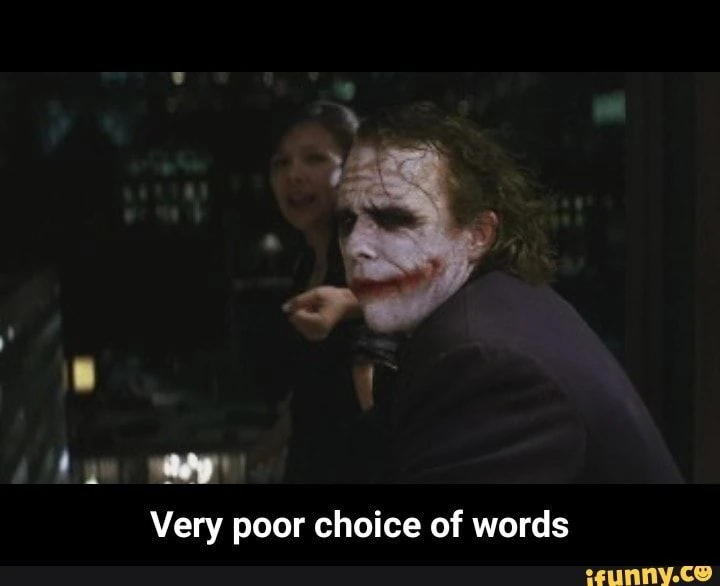

Brer Oswald
Well-Known Member
No. My internet presence should end. Probably for the best. If I have time, I will add pictures and more to the write up I started. I just posted what I had in case I ran out of time .Glad to hear! What's the new name gonna be? Still gonna hang around the imagineering forum?
spacemt354
Chili's
You should do what's best for you - if that means leaving the forums - then that's what you do. All the best to you!No. My internet presence should end. Probably for the best. If I have time, I will add pictures and more to the write up I started. I just posted what I had in case I ran out of time .
Brer Oswald
Well-Known Member
It’s not even the Forum that’s causing the problem. Idk, maybe I should spend more time here than elsewhere. But now the “Brer Oswald” Name has such a negative reputation attached to it.You should do what's best for you - if that means leaving the forums - then that's what you do. All the best to you!
Evilgidgit
Well-Known Member
It’s not even the Forum that’s causing the problem. Idk, maybe I should spend more time here than elsewhere. But now the “Brer Oswald” Name has such a negative reputation attached to it.
You're passion and commitment shown on this forum are brilliant. You shouldn't be so hard on yourself. Prioritise your midterms and personal aims first. We always appreciate what you do and enjoy your company. Don't feel like you have to run yourself ragged. Everything will be alright.
Pi on my Cake
Well-Known Member
- In the Parks
- Yes
I get that. I've had times in my life if where I've had to step back from the internet. Just know you're always welcome back, new name or notNo. My internet presence should end. Probably for the best. If I have time, I will add pictures and more to the write up I started. I just posted what I had in case I ran out of time .
Evilgidgit
Well-Known Member
PART TWO!
Our next destination, was, well, to ride every single rollercoaster in the park, allowing us to explore the other lands too. They had undergone rather minor refurbishments, sprucing up the scenery and making the stories a little more engaging. Not that really mattered, since most of the time, we were screaming and being thrown around on every coaster from Oblivion, The Smiler, Nemesis, and the fantastic Wicker Man.
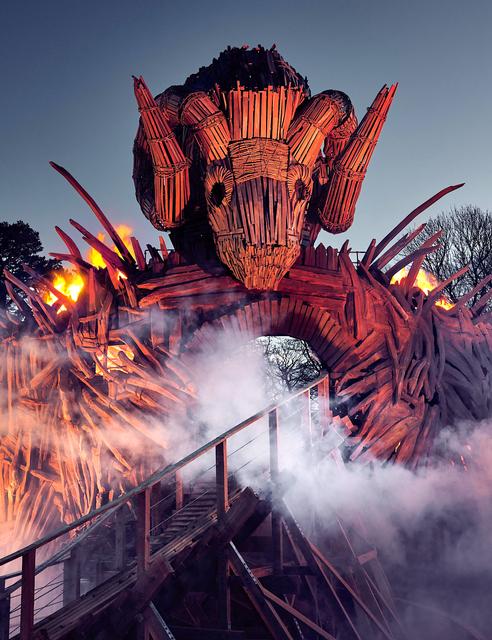
Mutiny Bay, the park’s pirate-themed land, gained a new 4D cinema movie, The Legends of the Seven Seas, a 20-minute history of piracy around the world, though mostly in the Caribbean of course. Half the children in the audience could easily have been pirates, the way they were shouting and shrieking like they were about to board a ship.
We took the time to visit the other new land, The World of David Walliams, a refurbished Cloud Cuckoo Land, based on children’s books by the British comedian, that none of us had read. Still, though the dark ride Gangsta Granny: The Ride was a fun romp, involving a wacky grandma and her grandson throwing the heist of the century at the Tower of London. The ride vehicles could spin 360 degrees, and the use of smells and projection mapping made it feel a lot more exciting than thought.
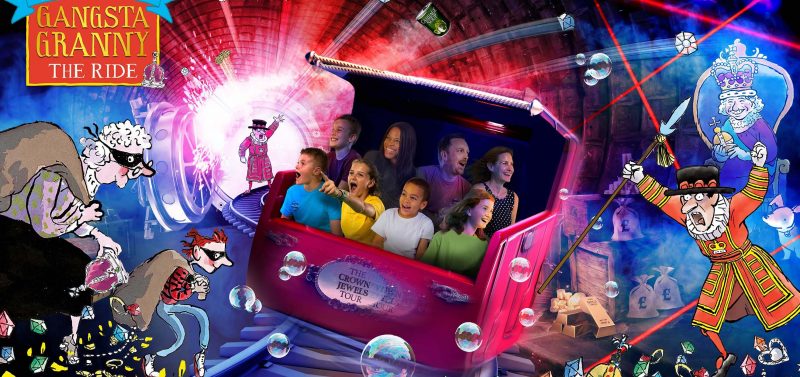
Of course, perhaps the biggest anticipation during our visit was SONIC’S SPEED ZONE, based on Sega’s blue hedgehog mascot, and acting as a potential rival to Universal’s upcoming Super Nintendo World. Though Merlin Entertainments gained license to all of Sega’s game catalogue, for now, only Sonic is present. Sonic has had past at Alton Towers, briefly find a home in Spinball Whizzer. The success of the movie also attracted a lot of people, so for a land about speed, we were rather slow moving.
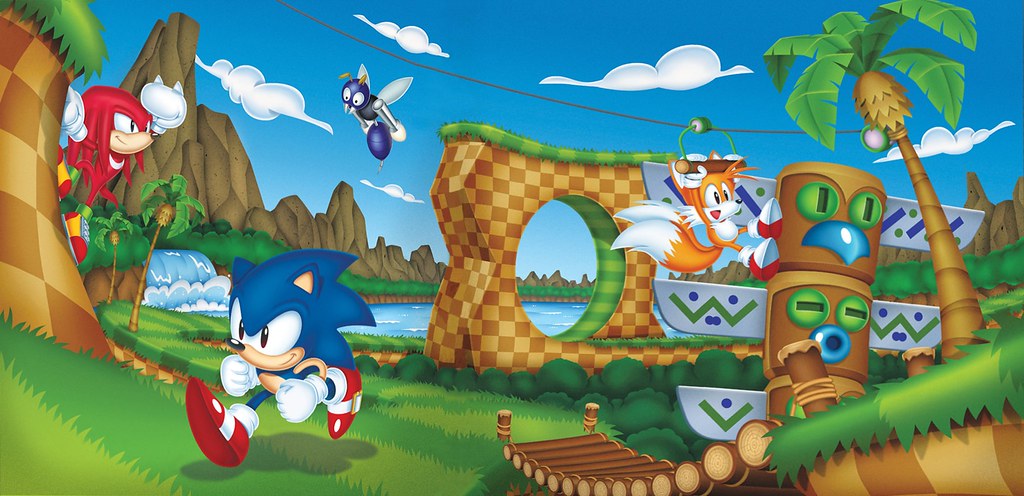
The land’s architecture, based on the hills and loop-da-loops of Green Hill Zone stood out amongst the other lands, bright and colourful. The palm trees and chequered rockwork were a mix of realistic and honouring their pixelated roots. Chao, Badniks, and Sonic’s animal friends dotted the landscape, and there were a lot of easter eggs, which @Evilgidgit and @Brer Oswald spent a lot of time pointing out to the rest of our confused party.
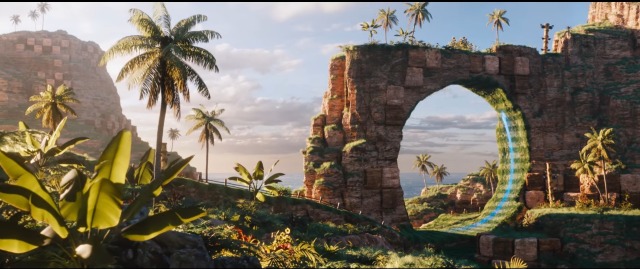
A small village area, made up of beach huts and tropical shacks, housed a chili dog stand (because, of course!), a café and play area themed to a Chao Garden, and Green Hill Gems, a character merchandise shop. Certain members of our group had to be literally dragged out of said store before they tried to buy everything! Come on, who doesn’t a coffee table made of springs!
After that, we came across this ride called Tails' Sky Patrol. I'm guessing it was based on the 1995 game starring Sonic's faithful sidekick. It's a spinner ride a la Dumbo the Flying Elephant, where you pilot a biplane similar in appearance to Tails' own plane the Tornado. The attraction has sixteen planes in total, each one fitting a total of four people. Those in the front row of the plane can control how high they fly, while those in the back row control the pitch from front to back. Younger guests should love it - I know I sure did!

The exit took us into Tails’ workshop, a Tracy Island-esque laboratory (that's a Thunderbirds reference!), where interactive games and a M&G area awaited. Kinda like if Tails had invented ImageWorks. Characters on hand included Sonic himself, Tails, Knuckles the Echidna, Amy Rose, Cream the Rabbit, Shadow the Hedgehog, and Dr. Eggman.
The fastest attraction is Sonic’s Spin Dash, which we saw zooming around the landscape non-stop. The most eye-catching element of this coaster was a blue hamster wheel-like seat the front, spinning and rolling the guests around. The gimmick was that we were Sonic so to speak, with the guests performing the Spin Dash in the hamster wheel, whilst everyone else was following behind in the “tail” of the speed. The ride was an absolute blast, fast-paced, going through themed corkscrews, loop-da-loops, and crazy drops. If you’ve ever played a Sonic game and longed to experience a Sonic Spin Dash, this is the coaster for you!


A path at the back of the land takes us through a canyon, which slowly becomes metallic and a little foreboding. Beyond that lies Dr. Eggman’s “secret” base, our entranceway to the land’s most ambitious attraction. Sonic & Shadow: Chaos Control is an epic mix of a dark ride, simulator, and rollercoaster. The vehicles were from trackless routes, to magnetically attaching to rails, to spinning on cleverly disguised turntables, and all whilst constantly moving, dancing, and weaving around each other and the attraction.

Our story involves Dr. Eggman capturing Shadow the Hedgehog, plotting to use his unique energy and power as a weapon. Eggman flees up to the Space Colony ARK, essentially one of Sonic’s numerous Star Wars homages (have you seen the Death Egg!?), which is Shadow’s birthplace. Eggman wants to charge up the dormant, moon-busting Eclipse Cannon via Shadow’s power. Sonic, Tails, and Knuckles break into the base to steal a rocket, fly to the ARK, and stop Eggman. Our role is playing the role of special agents of the Guardian Units of Nations (G.U.N.) to aid Team Sonic to save Shadow. Fair dos, I’m in!
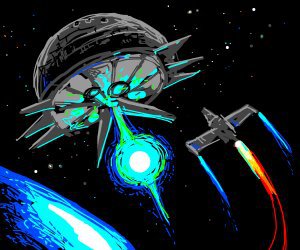
Our first stop in the base is to get into a simulated spacecraft piloted by an animatronic Tails, racing up to the ARK, shaken by laserfire and meteorites sent by Eggman. We dock, transitioning to our main ride vehicles, the Egg Pods (or “Porcupods” as Sonic nicknames them), which can move from trackless to magnetic rails in the blink of an eye.
Before we could shout “Sonic Boom!”, we were off through the ARK, down metal corridors, our vehicles dodging laserbeams and Badniks. Sonic, Tails, and Knuckles appeared throughout, performing attacks on the robots and weapons to clear a path for us. It was a cool mix of screens, special effects, and animatronics. There was an amazing moment where we raced down a hallway, and Sonic runs beside us. Was it an animatronic or project mapping? It was awesome!
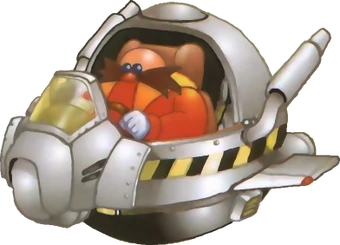
Then, before our eyes, the Egg Pod transitioned onto rails, and we were grinding our way beneath the underside of the ARK with Sonic and co. Almost like being on a coaster, but not quite. Team Sonic finally confronted Dr. Eggman in the Eclipse Cannon’s control room, where Shadow is prisoner. The scene was lengthy, with several Egg Pods on a rotating turntable. Eggman then reveals his devious master plan is true Eggman style:
“So nice of you to drop by! You’re just in time to get front row seats for the show. Behold, THE ECLIPSE CANNON! Using Shadow’s Chaos power, I’ll be able to fire a beam onto the earth, wiping out every theme park. With no theme parks on earth, I’ll be able to build the ultimate one, Eggmanland! Then, everyone will have to come! OHOHOHOHO!”

Out the window is Earth, with the cannon targeting Alton Towers! Sonic uses the Chaos Emeralds to transform into Super Sonic, freeing Shadow, and damaging the cannon. Shadow warns us the cannon is unstable, alarms blaring and all that. We have to escape! Through more hallways we go, plunging down an elevator shaft, and wind up in a dark chamber in the depths of the ARK. Here, we encounter the gigantic Biolizard, a mutant monster created from the same science that made Shadow, and it wants him (and us) dead!
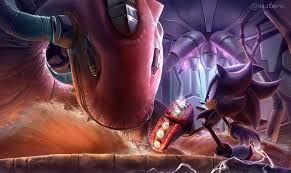
Sonic and Shadow manage to subdue the beast with Chaos Spears, guiding us back to our spacecraft, culminating in a supersonic dramatic finale as the ARK implodes. Eggman gets stuck on the front of the ship and flies off as we safely return to Alton Towers, proclaimed members of the Sonic Heroes! Like a fusion of Mystic Manor and Rise of the Resistance, Sonic & Shadow: Chaos Control was certainly the big draw of Sonic’s land, big, bombastic, and brilliant in design, thrills, and fun.
All in all, Alton Towers is a fantastic place to visit, with surprisingly lots to do in a place so huge and full of space. Whether it is the epic rollercoasters, the charming dark rides, or even just a desire to relax on the lawns, there is a reason why this is the UK’s most popular theme park. The new additions could be just the beginning for the park gaining a new lease on life. If there was a downside, it was the park closed at the very peculiar time of 5pm GMT, so anyone trying to leave will immediately get stuck in traffic. Its latest attractions definitely set the stage for the new expectations and levels that Merlin Entertainments must maintain in all their resorts.
But, whilst I want to take a rest in a deckchair and wander the gardens, we have three more parks to visit! Europe, here we come!
THE BUDGET
Peter Rabbit's Carrot Caper $25 million
Jeremy Fisher's Lilypad Splash $1 million
Matilda's Mischeivous Adventure $20 million
Giant Peach walkthrough $5 million
Chronicles of Narnia river ride $45million
Sonic's Spin Dash $20 million
Tails' Sky Patrol $1 million
Sonic and Shadow: Chaos Control $120 million
The rest of $13 million is left for the restaurants, shops, and enhancements!
Our next destination, was, well, to ride every single rollercoaster in the park, allowing us to explore the other lands too. They had undergone rather minor refurbishments, sprucing up the scenery and making the stories a little more engaging. Not that really mattered, since most of the time, we were screaming and being thrown around on every coaster from Oblivion, The Smiler, Nemesis, and the fantastic Wicker Man.

Mutiny Bay, the park’s pirate-themed land, gained a new 4D cinema movie, The Legends of the Seven Seas, a 20-minute history of piracy around the world, though mostly in the Caribbean of course. Half the children in the audience could easily have been pirates, the way they were shouting and shrieking like they were about to board a ship.
We took the time to visit the other new land, The World of David Walliams, a refurbished Cloud Cuckoo Land, based on children’s books by the British comedian, that none of us had read. Still, though the dark ride Gangsta Granny: The Ride was a fun romp, involving a wacky grandma and her grandson throwing the heist of the century at the Tower of London. The ride vehicles could spin 360 degrees, and the use of smells and projection mapping made it feel a lot more exciting than thought.

Of course, perhaps the biggest anticipation during our visit was SONIC’S SPEED ZONE, based on Sega’s blue hedgehog mascot, and acting as a potential rival to Universal’s upcoming Super Nintendo World. Though Merlin Entertainments gained license to all of Sega’s game catalogue, for now, only Sonic is present. Sonic has had past at Alton Towers, briefly find a home in Spinball Whizzer. The success of the movie also attracted a lot of people, so for a land about speed, we were rather slow moving.

The land’s architecture, based on the hills and loop-da-loops of Green Hill Zone stood out amongst the other lands, bright and colourful. The palm trees and chequered rockwork were a mix of realistic and honouring their pixelated roots. Chao, Badniks, and Sonic’s animal friends dotted the landscape, and there were a lot of easter eggs, which @Evilgidgit and @Brer Oswald spent a lot of time pointing out to the rest of our confused party.

A small village area, made up of beach huts and tropical shacks, housed a chili dog stand (because, of course!), a café and play area themed to a Chao Garden, and Green Hill Gems, a character merchandise shop. Certain members of our group had to be literally dragged out of said store before they tried to buy everything! Come on, who doesn’t a coffee table made of springs!
After that, we came across this ride called Tails' Sky Patrol. I'm guessing it was based on the 1995 game starring Sonic's faithful sidekick. It's a spinner ride a la Dumbo the Flying Elephant, where you pilot a biplane similar in appearance to Tails' own plane the Tornado. The attraction has sixteen planes in total, each one fitting a total of four people. Those in the front row of the plane can control how high they fly, while those in the back row control the pitch from front to back. Younger guests should love it - I know I sure did!

The exit took us into Tails’ workshop, a Tracy Island-esque laboratory (that's a Thunderbirds reference!), where interactive games and a M&G area awaited. Kinda like if Tails had invented ImageWorks. Characters on hand included Sonic himself, Tails, Knuckles the Echidna, Amy Rose, Cream the Rabbit, Shadow the Hedgehog, and Dr. Eggman.
The fastest attraction is Sonic’s Spin Dash, which we saw zooming around the landscape non-stop. The most eye-catching element of this coaster was a blue hamster wheel-like seat the front, spinning and rolling the guests around. The gimmick was that we were Sonic so to speak, with the guests performing the Spin Dash in the hamster wheel, whilst everyone else was following behind in the “tail” of the speed. The ride was an absolute blast, fast-paced, going through themed corkscrews, loop-da-loops, and crazy drops. If you’ve ever played a Sonic game and longed to experience a Sonic Spin Dash, this is the coaster for you!
A path at the back of the land takes us through a canyon, which slowly becomes metallic and a little foreboding. Beyond that lies Dr. Eggman’s “secret” base, our entranceway to the land’s most ambitious attraction. Sonic & Shadow: Chaos Control is an epic mix of a dark ride, simulator, and rollercoaster. The vehicles were from trackless routes, to magnetically attaching to rails, to spinning on cleverly disguised turntables, and all whilst constantly moving, dancing, and weaving around each other and the attraction.

Our story involves Dr. Eggman capturing Shadow the Hedgehog, plotting to use his unique energy and power as a weapon. Eggman flees up to the Space Colony ARK, essentially one of Sonic’s numerous Star Wars homages (have you seen the Death Egg!?), which is Shadow’s birthplace. Eggman wants to charge up the dormant, moon-busting Eclipse Cannon via Shadow’s power. Sonic, Tails, and Knuckles break into the base to steal a rocket, fly to the ARK, and stop Eggman. Our role is playing the role of special agents of the Guardian Units of Nations (G.U.N.) to aid Team Sonic to save Shadow. Fair dos, I’m in!

Our first stop in the base is to get into a simulated spacecraft piloted by an animatronic Tails, racing up to the ARK, shaken by laserfire and meteorites sent by Eggman. We dock, transitioning to our main ride vehicles, the Egg Pods (or “Porcupods” as Sonic nicknames them), which can move from trackless to magnetic rails in the blink of an eye.
Before we could shout “Sonic Boom!”, we were off through the ARK, down metal corridors, our vehicles dodging laserbeams and Badniks. Sonic, Tails, and Knuckles appeared throughout, performing attacks on the robots and weapons to clear a path for us. It was a cool mix of screens, special effects, and animatronics. There was an amazing moment where we raced down a hallway, and Sonic runs beside us. Was it an animatronic or project mapping? It was awesome!

Then, before our eyes, the Egg Pod transitioned onto rails, and we were grinding our way beneath the underside of the ARK with Sonic and co. Almost like being on a coaster, but not quite. Team Sonic finally confronted Dr. Eggman in the Eclipse Cannon’s control room, where Shadow is prisoner. The scene was lengthy, with several Egg Pods on a rotating turntable. Eggman then reveals his devious master plan is true Eggman style:
“So nice of you to drop by! You’re just in time to get front row seats for the show. Behold, THE ECLIPSE CANNON! Using Shadow’s Chaos power, I’ll be able to fire a beam onto the earth, wiping out every theme park. With no theme parks on earth, I’ll be able to build the ultimate one, Eggmanland! Then, everyone will have to come! OHOHOHOHO!”

Out the window is Earth, with the cannon targeting Alton Towers! Sonic uses the Chaos Emeralds to transform into Super Sonic, freeing Shadow, and damaging the cannon. Shadow warns us the cannon is unstable, alarms blaring and all that. We have to escape! Through more hallways we go, plunging down an elevator shaft, and wind up in a dark chamber in the depths of the ARK. Here, we encounter the gigantic Biolizard, a mutant monster created from the same science that made Shadow, and it wants him (and us) dead!
Sonic and Shadow manage to subdue the beast with Chaos Spears, guiding us back to our spacecraft, culminating in a supersonic dramatic finale as the ARK implodes. Eggman gets stuck on the front of the ship and flies off as we safely return to Alton Towers, proclaimed members of the Sonic Heroes! Like a fusion of Mystic Manor and Rise of the Resistance, Sonic & Shadow: Chaos Control was certainly the big draw of Sonic’s land, big, bombastic, and brilliant in design, thrills, and fun.

All in all, Alton Towers is a fantastic place to visit, with surprisingly lots to do in a place so huge and full of space. Whether it is the epic rollercoasters, the charming dark rides, or even just a desire to relax on the lawns, there is a reason why this is the UK’s most popular theme park. The new additions could be just the beginning for the park gaining a new lease on life. If there was a downside, it was the park closed at the very peculiar time of 5pm GMT, so anyone trying to leave will immediately get stuck in traffic. Its latest attractions definitely set the stage for the new expectations and levels that Merlin Entertainments must maintain in all their resorts.
But, whilst I want to take a rest in a deckchair and wander the gardens, we have three more parks to visit! Europe, here we come!
THE BUDGET
Peter Rabbit's Carrot Caper $25 million
Jeremy Fisher's Lilypad Splash $1 million
Matilda's Mischeivous Adventure $20 million
Giant Peach walkthrough $5 million
Chronicles of Narnia river ride $45million
Sonic's Spin Dash $20 million
Tails' Sky Patrol $1 million
Sonic and Shadow: Chaos Control $120 million
The rest of $13 million is left for the restaurants, shops, and enhancements!
Brer Oswald
Well-Known Member
@Evilgidgit I just realized I never specified that the ride vehicles would be the Egg Pods. That was my plan the entire time.
I can compile music tracks for the ride and scene placements if you’re interested.
I can compile music tracks for the ride and scene placements if you’re interested.
Register on WDWMAGIC. This sidebar will go away, and you'll see fewer ads.
